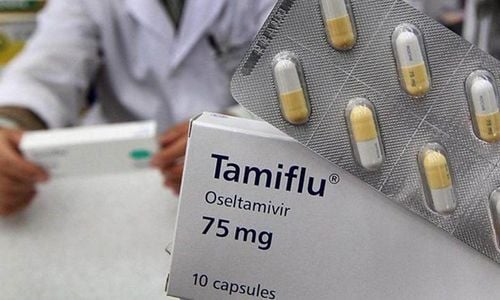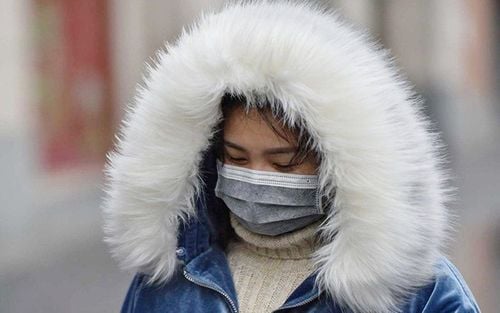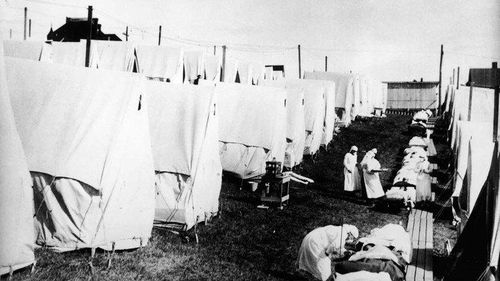This is an automatically translated article.
The 1918 flu pandemic is said to be the most terrible disease pandemic because it killed at least 50 million people worldwide. Clinicians and scientists of the time grappled with many unknowns and added confusion that the disease was caused by bacteria, not viruses. It took 30 years for people to understand that the 1918 flu pandemic that infected 30% of the world's population was caused by the H1N1 virus.
Because of its influence, the 1918 pandemic is called the “Mother of all pandemics”. At the same time it continues to inspire research into the origins and relationships between the 1918 influenza virus and other influenza viruses.
1. What is the H1N1 virus?
Influenza A virus (H1N1) is a member of the family Orthomyxoviridae (a group of RNA viruses). Influenza A viruses are divided into subtypes mainly based on two types of surface antigens (foreign proteins) hemagglutinin (H) and neuraminidase (N). Thus, the H1N1 virus represents a subgroup of influenza A. This type is differentiated into strains based on small variations in the RNA sequence.
The H1N1 virus is subject to constant antigenic changes. Thus, the rapid evolution of viruses is caused by mutations in genes encoding the H and N antigenic proteins. Antigenic variation generates new strains of influenza viruses. At the same time, the evolution of viruses is facilitated by animals such as pigs and birds, as they serve as reservoirs for influenza A virus strains.
When a pig or bird is simultaneously infected with different types of viruses Influenza A strains, genetic recombination is possible. Recombination represents another process by which new strains of influenza A can be produced. Influenza strains of H1N1 circulate continuously in human populations worldwide, and as a result, it will continually evolve and evade the human immune system. So this is the main cause of the H1N1 pandemic.
2. The 1918 flu pandemic caused by the H1N1 . virus
The 1918 flu pandemic was the most severe pandemic in history. It is caused by an H1N1 virus with genes of avian origin. Although there is no universal consensus on the origin of the virus, it spread worldwide between 1918 and 1919.
During this same period, World War I took place. World War I conditions (overcrowding and global marching) helped spread the 1918 flu. The vulnerability of healthy young people, the lack of vaccines and the lack of treatments have created a major public health crisis. It has been estimated that around 500 million people or a third of the world's population are infected with this virus. The estimated death toll is at least 50 million worldwide, and with about 675,000 occurring in the United States. Mortality rates are high among children, those aged 20-40 and over 65.
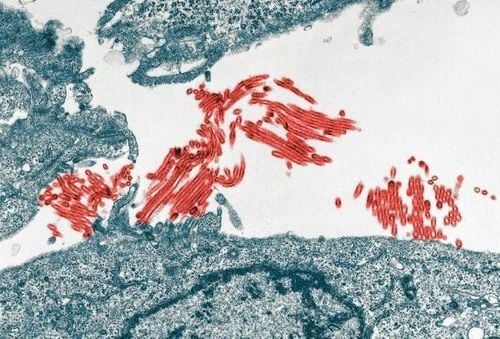
Virus cúm H1N1 (màu đỏ)
The evolution of the influenza pandemic caused by the H1N1 virus in 1918 is shown through the following historical milestones:
April 1917, the United States entered World War I with 378,000 soldiers serving in the armed forces. In June 1917, a draft was established to increase the number of soldiers. As a result, the army began training recruits at 32 large camps, each containing 25,000 to 55,000 soldiers. In March 1918, the first outbreak of flu-like illness was detected in the United States. More than 100 soldiers at Camp Funston in Fort Riley, Kansas fell ill with the flu. Within a week, the number of flu cases was very large. The flu's sporadic activity spread unevenly across the United States, Europe, and possibly Asia over the next six months. April 1918, the first mention of influenza appeared in a weekly public health report on April 5. The report informed officials of 18 severe cases and 3 deaths. in Haskell, Kansas. In May 1918, hundreds of thousands of troops crossed the Atlantic Ocean each month as they were deployed for World War I. In September 1918, a second wave of flu appeared at Camp Devens - a US Army training camp just outside of Boston and at a two-man facility in Boston. Between September and November, there is a second peak flu season in the United States. This second wave is very dangerous and is responsible for most of the deaths from the pandemic. The New York City Board of Health added influenza to its list of reported illnesses and required all flu cases to be isolated at home or in a city hospital. By the end of September, more than 14,000 flu cases had been reported at Camp Devens, equivalent to about a quarter of the entire training camp and approximately 757 deaths.
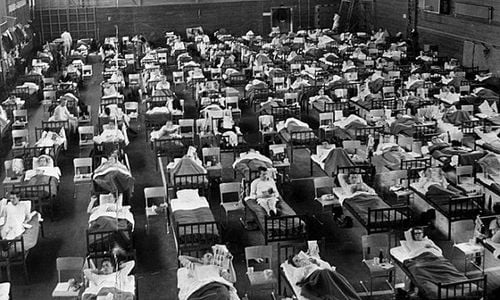
Dịch cúm năm 1918
October 1918, the pandemic influenza virus H1N1 virus of 1918 killed approximately 195,000 Americans in October. In the fall of 1918, the United States experienced a severe shortage of professional nurses, due to the deployment A large number of nurses go to military camps in the United States and abroad. Chicago of the American Red Cross put out an urgent appeal for volunteers to help nurses. Philadelphia was hit hard with the pandemic influenza virus, more than 500 bodies are awaiting burial. Cold storage factories are used as makeshift morgues, and a trolley manufacturer donated 200 boxes of packaging to use as coffins. Chicago, along with many other cities across the United States, has closed theaters, movie theaters, night schools and banned public gatherings.
The San Francisco Health Board, requires any person serving the public to wear a mask and strongly recommends that all residents wear a mask in public.
New York City reports 40% decline in shipyard productivity due to flu in the middle of World War I
November 1918, End of World War I causes flu to return when people celebrate Armistice Day and soldiers begin to demobilize. Salt Lake City officials placed quarantine signs on the front and back doors of 2,000 homes where residents had the flu.
At the end of World War I, the United States military increased in size from 378,000 soldiers in April 1918 to 4.7 million soldiers.
December 1918, public health officials began education and publicity programs about the dangers of coughing and sneezing or carelessness in handling nasal discharge. The American Public Health Association's committee encourages stores and factories to schedule opening hours and walk people to work when possible, rather than using public transportation to prevent overload.
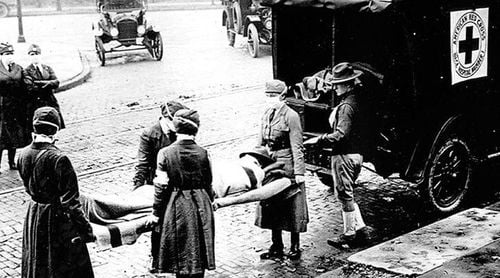
Đại dịch cúm năm 1918 giết chết khoảng 195,000 người Mỹ
January 1919, a third flu wave occurred in the winter and spring of 1919, killing even more people. The wave of the third flu epidemic subsided in the summer. In San Francisco, about 1,800 flu cases and 101 deaths were reported in the first five days of January. Many San Antonio citizens began to complain that new flu cases were being reported and this indicated yet another flu outbreak was developing.
706 flu cases and 67 deaths reported in New York spark fears of a severe recurrence of the flu. The Boston Hospital trustees requested the Mayor to provide a special budget of $3,000 for influenza research and treatment.
February 1919, flu seemed to be eradicated in New Orleans as the number of reported cases dropped. At the same time, Illinois passed a bill to create a year-long course to become a practicing nurse, in an effort to address nursing shortages as the pandemic continues. In April 1919, at the Versailles Peace Conference, while negotiating the end of World War I with other world leaders, US President Woodrow Wilson collapsed. Some historians speculate that he was weakened by the flu, which is still rampant in Paris. References: cdc.gov; nationalgeographic.com
MORE:
Is influenza A/H1N1 virus dangerous? Is influenza A/H1N1 contagious? What to do when suspected influenza A/H1N1?






